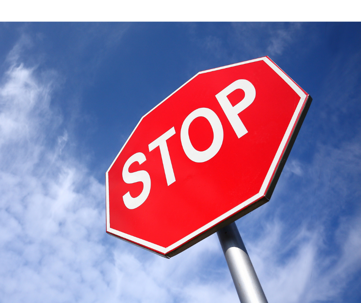We all know what a stop sign means, but have you ever wondered why it looks the way it does?
Color and Shape
According to the Manual of Stop Signs, the very first stop signs were installed in the state of Michigan in 1915. The first stop signs used a variety of colors and shapes until the late 1920’s, when the color was standardized to yellow to maximize day and night visibility. Since this preceded the invention of glass-bead retro-reflectorization for sign faces, a red sign would have looked very dark at night. Yellow was deemed the most visible.
By 1954, sign makers had adopted the use of a durable, fade-resistant red coating. At this point the background color of the STOP sign was changed to the red color we see today. This change from yellow to red served to distinguish the regulatory STOP sign from other yellow warning signs. It also made the sign color consistent with that of red traffic signal indications, which had already been using red for decades to signal “STOP”.
During this time, the shape also evolved from early variations into the familiar octagon shape we see today. This shape is immediately recognizable from both the back side and in the dark.
STOP means STOP!
Stop signs are an effective roadway tool to help ensure that drivers are obeying the rules of the road and keeping themselves and others safe. Stop signs help to keep speeding under control, reduce the amount of traffic accidents, and reduce any driver delay while navigating traffic. At intersections, stop signs assign the right of way to drivers and keep traffic flowing consistently.
When you pull up to a stop sign, bring your vehicle to a full and complete stop at the designated stop line. If you are at a four-way stop intersection, drivers should yield the right of way to the first vehicle to reach the stopping area. If two vehicles reach the stop signs at the same time, the driver on the left is expected to yield to the driver on the right.
By recognizing and obeying stop sign rules, you are keeping both yourself and others safe on the road. Fully stopping at stop signs and looking all ways may help avoid accidents or even save your life.

